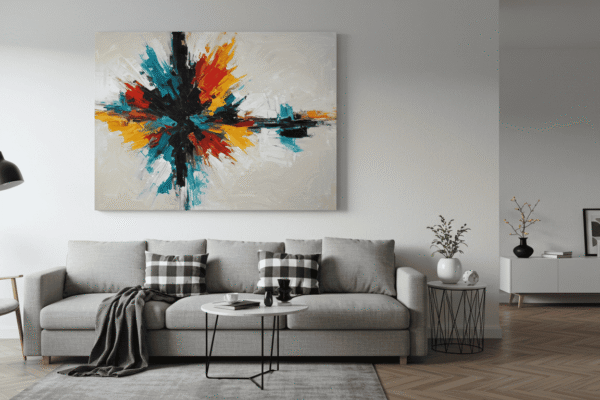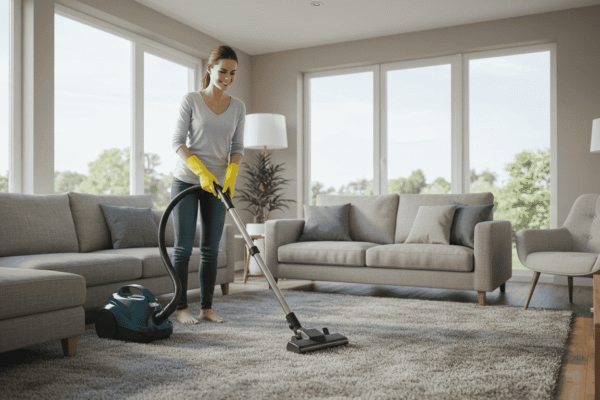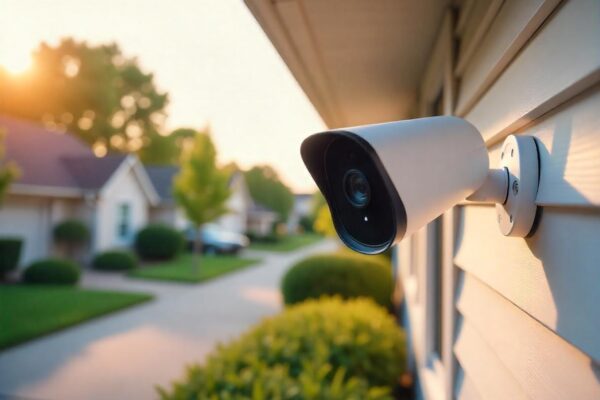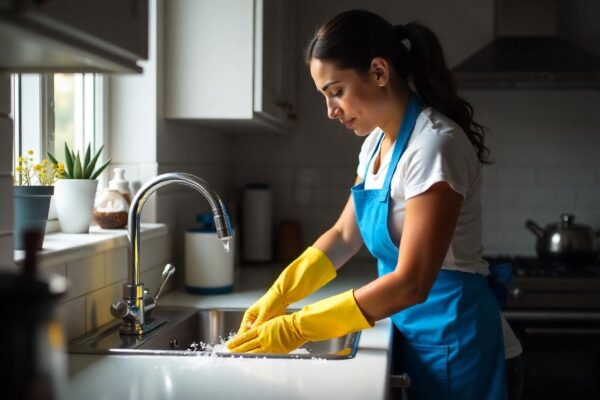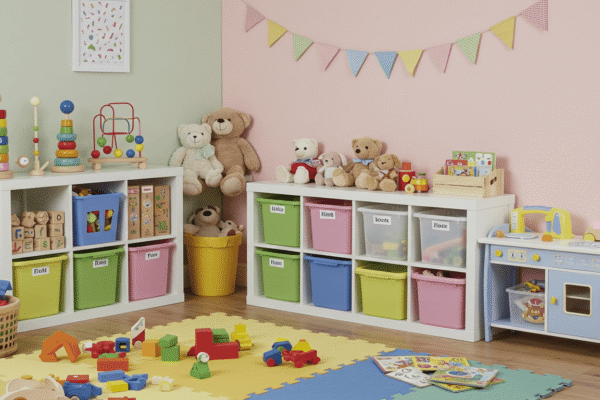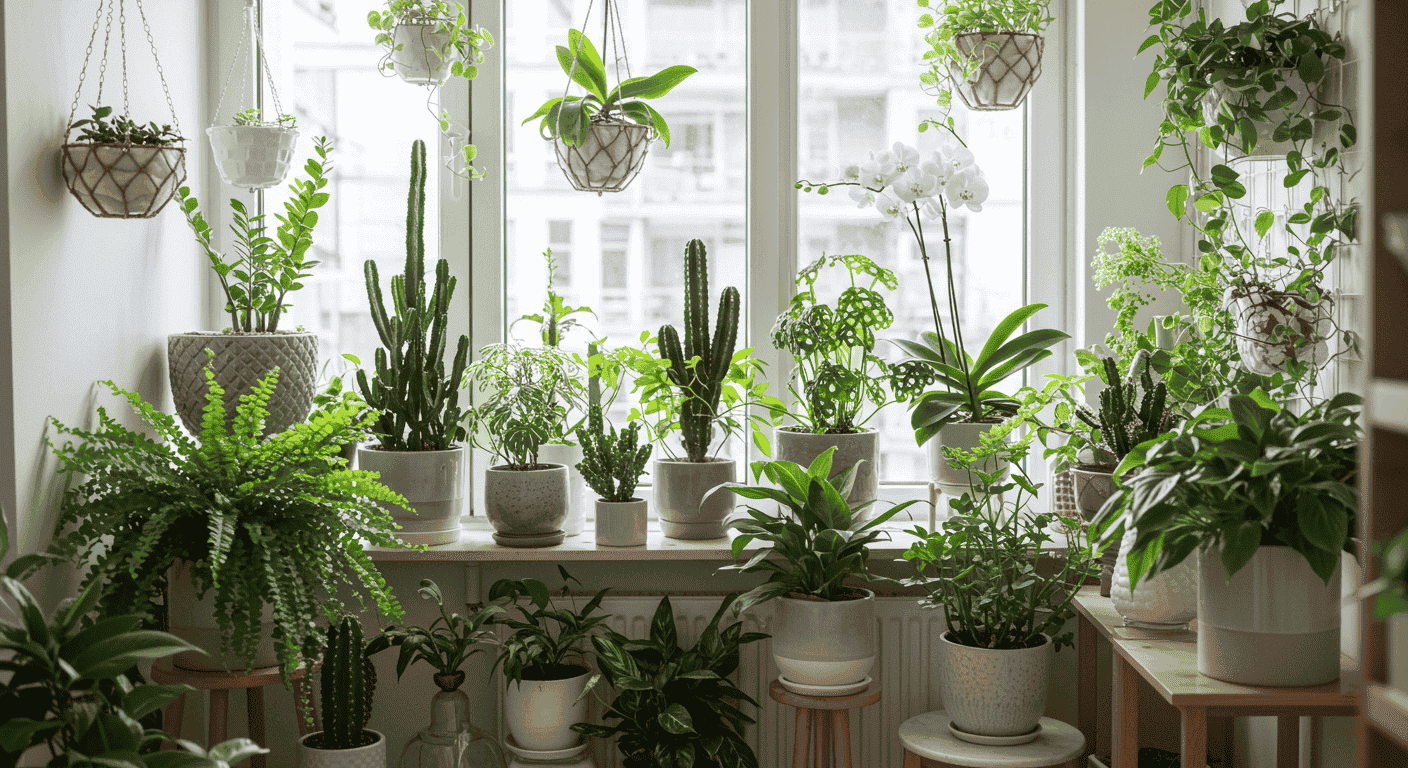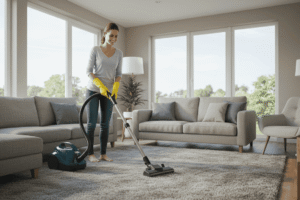Apartment garden setups are becoming increasingly popular, especially for city dwellers looking to bring a touch of nature into their limited living spaces. Whether you have a small balcony, a sunny windowsill, or just a corner to spare, creating a budget-friendly apartment garden is easier than you might think. With smart planning, low-cost gardening ideas, and the right small space gardening techniques, you can enjoy fresh herbs, vibrant plants, and even some homegrown veggies without breaking the bank. In this guide, we’ll walk you through everything you need to know to build a thriving indoor garden setup that fits your lifestyle and budget perfectly.
Why Start an Apartment Garden? The Benefits Beyond Greenery
Starting an apartment garden is more than just adding greenery to your living space. It offers a variety of benefits that touch on health, finances, and the environment. Whether you live in a small studio or a high-rise apartment, cultivating a garden indoors or on your balcony can transform your lifestyle in meaningful ways. Let’s explore why setting up a budget-friendly apartment garden is a worthwhile investment for both your well-being and your wallet.
Mental and Physical Health Boosts
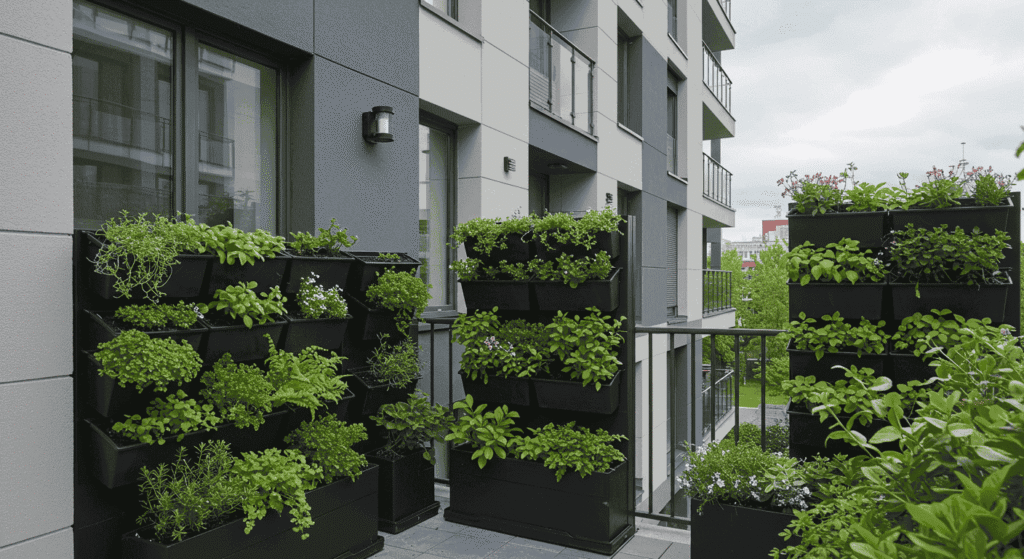
Engaging with plants through an apartment garden provides significant mental and physical health advantages. Caring for plants has been shown to reduce stress levels and promote relaxation, offering a natural way to unwind after a busy day. Beyond mental wellness, indoor plants improve air quality by filtering toxins and increasing oxygen levels, which can enhance respiratory health. The simple act of nurturing living things can also create a sense of accomplishment and connection with nature, even in an urban environment.
Saving Money and Eating Fresh
One of the most practical benefits of maintaining a small space garden is the potential to save money on groceries. Growing your own herbs and small vegetables at home means you have fresh ingredients at your fingertips, cutting down the need for frequent store purchases. This can be especially valuable for commonly used herbs like basil, mint, or parsley, which often lose freshness quickly when bought in stores. An apartment garden can provide a continuous, fresh supply of these greens at a fraction of the cost, making your kitchen both greener and more economical.
Environmental Impact of Urban Gardening
Beyond personal benefits, an apartment garden plays a role in promoting sustainability in urban settings. By growing plants at home, you reduce your reliance on commercially grown produce, which often involves long-distance transportation and packaging waste. Small-scale urban gardening also contributes to better air quality and supports biodiversity by providing habitats for pollinators such as bees and butterflies. Even limited green spaces in apartments help offset carbon footprints, making urban gardening a positive step toward environmental responsibility.
Choosing the Perfect Spot: Making the Most of Your Apartment Space
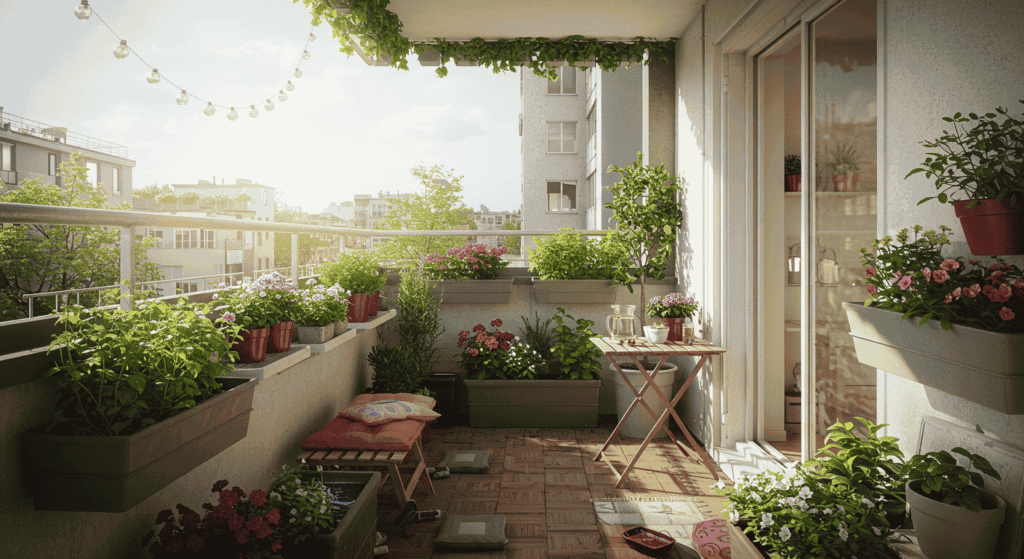
Finding the right location for your apartment garden is key to its success. Every plant has specific light requirements, and understanding how much natural light your space receives will help you select the best plants and placement. Whether you have a sunny balcony or a shady corner, there are ways to optimize your space and create a thriving garden on a budget.
Light Availability: Finding Your Green Thumb’s Best Friend
Assessing natural light in your apartment is the first step in planning your small space garden. Natural light can be categorized into three types: direct sunlight, indirect light, and low light. Direct sunlight means the spot gets unfiltered sun for several hours a day, ideal for sun-loving plants. Indirect light is bright but not direct, often filtered through curtains or reflected off walls. Low light areas receive little natural sunlight, making them suitable for shade-tolerant plants. Understanding these distinctions helps you place your plants where they will flourish without wasting effort or resources.
Space Types: Balconies, Windowsills, and More
Your apartment garden doesn’t have to be limited to traditional spots like balconies or windowsills. Consider using shelves mounted near windows, hanging planters from the ceiling, or even repurposing unused corners. Vertical gardening solutions can maximize limited floor space, and stacking pots or using tiered plant stands can add greenery without clutter. Creative use of space not only makes your garden practical but also visually appealing, turning your apartment into a vibrant green oasis.
Table: Light Needs of Popular Apartment Plants
| Plant Type | Light Requirement | Ideal Placement |
|---|---|---|
| Herbs | Full Sun | South-facing window |
| Ferns | Indirect Light | Shaded corners |
| Succulents | Bright Light | Window ledge |
Budget-Friendly Gardening Tools and Materials
Creating a flourishing apartment garden doesn’t require expensive equipment. With a bit of creativity and resourcefulness, you can set up a thriving garden using affordable and often repurposed materials. Focusing on budget-friendly options ensures that your garden remains sustainable both financially and environmentally.
DIY Containers and Planters from Everyday Items
One of the easiest ways to keep costs low is by using everyday household items as containers. Think reused jars, tin cans, or old mugs transformed into charming planters. Upcycling these items not only saves money but also reduces waste. You can decorate them with paint, twine, or fabric to match your style and make your small space garden truly unique. This approach allows you to customize your setup while being eco-conscious.
Essential Tools Without Breaking the Bank
You don’t need a full toolkit to get started. Basic hand tools like a small trowel, pruning shears, and a watering can are often enough for most indoor gardening tasks. Look for durable but affordable options that can last through many planting seasons. Simple watering solutions like a spray bottle or homemade drip systems can help maintain your plants efficiently without the need for costly irrigation setups.
Sustainable Materials to Consider
Choosing the right materials is essential for a healthy apartment garden. Opt for eco-friendly soil mixes that avoid synthetic chemicals, and consider using organic compost made from kitchen scraps to enrich your plants naturally. Natural fertilizers, such as compost teas or homemade plant food, support strong growth without harming the environment. Incorporating these sustainable materials helps you cultivate a thriving garden while minimizing your ecological footprint.
Plant Selection: Best Low-Cost, Low-Maintenance Plants for Apartments

Choosing the right plants is essential when building a budget-friendly apartment garden. To get the most out of your space and investment, focus on varieties that are low-maintenance, versatile, and well-suited to indoor conditions. Whether you’re growing edible greens or decorative plants, there are plenty of affordable options that thrive in small urban environments.
Easy-to-Grow Herbs and Vegetables
For those looking to combine practicality with simplicity, easy-to-grow herbs and vegetables are the perfect starting point. Herbs like basil, mint, and chives grow quickly and require minimal care, making them ideal for beginners. Vegetables such as cherry tomatoes, lettuce, and green onions are also surprisingly adaptable to containers and indoor settings. These plants grow fast, respond well to basic care, and offer a continuous harvest, making them a cost-effective choice for any apartment garden.
Stylish Indoor Plants That Don’t Demand Much
If your goal is to add greenery and improve indoor air quality, there are several low-maintenance indoor plants that bring both style and function. Plants like the snake plant, pothos, and peace lily not only enhance interior aesthetics but also require very little attention. These resilient species tolerate low light, infrequent watering, and varied indoor climates—perfect for renters, busy schedules, or those just starting out with indoor gardening.
Table: Plant Care Overview for Budget Apartment Gardens
| Plant | Water Frequency | Growth Speed | Light Needs |
|---|---|---|---|
| Basil | Moderate | Fast | Full Sun |
| Snake Plant | Low | Slow | Low Light |
| Cherry Tomato | High | Medium | Full Sun |
Setting Up Your Garden: Step-by-Step Budget-Friendly Guide
Once you’ve chosen your plants and gathered your materials, it’s time to bring your apartment garden to life. With thoughtful planning and a few cost-effective tricks, you can design a garden setup that is not only functional but also aesthetically pleasing. Whether you’re working with a sunny balcony or a modest windowsill, these steps will help you build your garden with purpose and creativity—without overspending.
Planning Your Layout and Design
Before placing your pots and planters, take a moment to map out your space. A good layout starts with understanding the specific needs of your plants—some thrive in direct sun, others prefer shade. Grouping plants with similar light and watering needs simplifies maintenance and ensures consistent growth. To make the most of your limited space, consider using vertical gardening solutions such as ladder shelves or wall-mounted racks. This not only expands your planting area but also adds visual interest to your indoor or balcony garden.
Soil, Potting, and Drainage Tips
The health of your apartment garden begins with what’s below the surface. Use a light, well-draining potting mix suited for your plant types, and avoid reusing soil that may harbor pests or disease. Drainage is especially critical in indoor setups—make sure every container has proper holes or create a layer of small stones at the bottom to prevent water buildup. Overwatering is one of the most common mistakes in small gardens, so good drainage is your first defense against root rot.
Creative Hacks for Space Saving
Working with limited room requires a touch of ingenuity. Try wall-mounted planters to transform vertical surfaces into living green art. Use hanging baskets from ceiling hooks for trailing plants, or build a small plant tower using stackable containers. Shoe organizers can be repurposed for growing herbs, and foldable shelves can double as both decor and plant stands. These simple yet effective hacks can dramatically increase your growing space while keeping your budget-friendly garden compact and organized.
Watering, Feeding, and Maintaining Without Stress
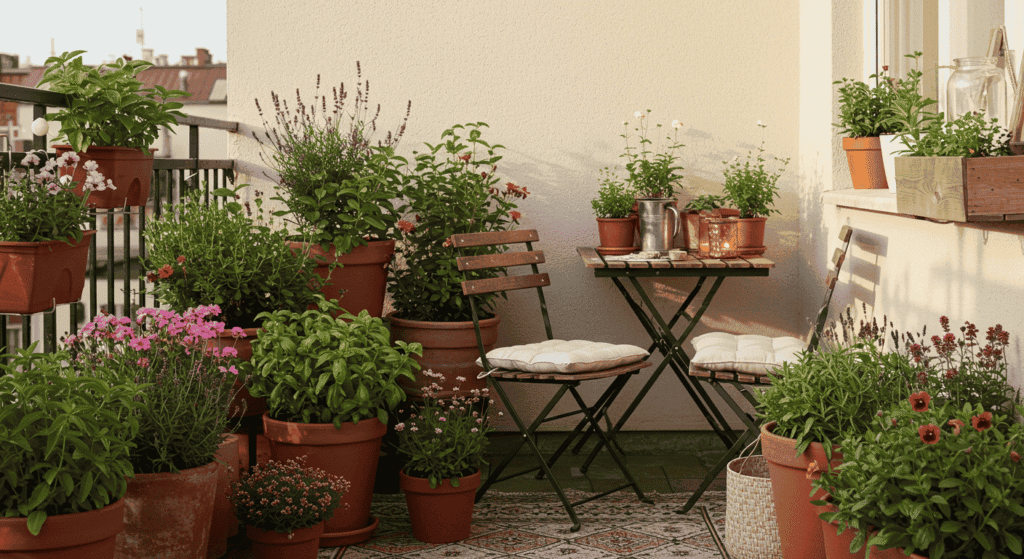
Maintaining your apartment garden doesn’t have to feel overwhelming. With smart routines and natural solutions, you can keep your plants healthy and thriving without adding stress to your daily life. Understanding watering and feeding needs is essential for a budget-friendly garden that stays vibrant throughout the seasons.
Smart Watering Routines for Busy Urban Gardeners
One of the biggest challenges in small space gardening is managing water properly. Overwatering can lead to root rot, while underwatering can stress your plants and stunt growth. To avoid these issues, establish a consistent watering schedule based on each plant’s needs. Check soil moisture regularly by touch, and water only when the top inch feels dry. Using tools like spray bottles or self-watering containers can help maintain the right moisture levels with minimal effort. Keeping a watering journal or calendar can also be a great way to stay on track without overdoing it.
Natural Fertilizers and Composting Hacks
Feeding your plants doesn’t mean buying expensive fertilizers. You can create your own nutrient-rich boosters at home using kitchen scraps and natural ingredients. Composting vegetable peelings, coffee grounds, and eggshells produces organic matter that enriches soil health. Compost teas, made by soaking compost in water, provide an easy liquid fertilizer. Additionally, simple kitchen staples like diluted banana peels or used tea leaves can be incorporated into your soil to support steady plant growth. These eco-friendly options keep your budget-friendly apartment garden thriving without relying on chemicals.
Table: Water and Feeding Schedule for Common Apartment Plants
| Plant | Watering Frequency | Fertilizing Tips |
|---|---|---|
| Mint | Twice a week | Monthly feed |
| Aloe Vera | Every 2 weeks | Minimal feeding |
| Lettuce | Daily (moist soil) | Every 2 weeks |
Troubleshooting Common Apartment Garden Challenges
Even the most carefully planned apartment garden can face challenges. From pesky insects to limited space, knowing how to troubleshoot problems quickly will keep your garden healthy and stress-free. This section offers practical solutions to common issues, helping you nurture your budget-friendly apartment garden with confidence.
Dealing with Pests Naturally
Pests can quickly damage your plants if left unchecked, but harsh chemicals aren’t your only option. Homemade remedies using ingredients like garlic, neem oil, or mild soap sprays provide effective, natural pest control. Regularly inspecting your plants and keeping them clean reduces the chance of infestations. Companion planting—placing certain herbs near vulnerable plants—can also deter pests. These natural methods protect your indoor garden without risking your health or the environment.
Managing Space Constraints and Plant Growth
Limited space means careful management of your plants’ size and placement. Regular pruning encourages healthy growth and prevents overcrowding. Remove dead or yellowing leaves to improve airflow and light penetration. Knowing when to re-pot is essential; if roots start to crowd the container or plants show signs of stress, it’s time to upgrade to a slightly larger pot. This simple care routine ensures your small space garden remains organized and flourishing.
Signs Your Plants Need Attention
Early detection of problems is key to successful urban gardening. Look out for wilting leaves, discoloration, slow growth, or spots, which can signal watering issues, pests, or nutrient deficiencies. Yellow leaves often indicate overwatering, while brown tips may suggest dry conditions. A quick daily check using this mental checklist can prevent minor issues from becoming major setbacks, keeping your apartment garden vibrant and healthy.
Harvesting, Using, and Enjoying Your Apartment Garden
The most rewarding part of an apartment garden is harvesting and enjoying the fruits of your labor. Knowing when and how to harvest your herbs and vegetables ensures you get the best flavor and yield from your plants. Plus, there are plenty of creative ways to use your homegrown greens that go beyond the kitchen.
When and How to Harvest Herbs and Veggies
Timing is everything when it comes to harvesting. For most herbs, frequent clipping encourages new growth, so snip leaves regularly but avoid cutting more than one-third of the plant at a time. Vegetables like cherry tomatoes are best picked when fully ripe and brightly colored. Using sharp scissors or garden shears helps prevent damage to your plants. Proper harvesting techniques promote continued productivity and extend the life of your budget-friendly apartment garden.
Creative Uses for Your Homegrown Greens
Your small space garden can contribute fresh ingredients to your cooking, but it also offers other fun possibilities. Use herbs as natural garnishes to elevate meals or dry them for homemade teas and sachets. Fresh greens can be turned into simple decor—think mini bouquets or centerpieces that bring natural charm indoors. Sharing your harvest as thoughtful gifts to friends and family spreads the joy of gardening and encourages others to start their own urban gardens.
Seasonal Care and Preparing for Off-Seasons
Maintaining your apartment garden year-round requires adjusting care routines as seasons change. In colder months, consider moving plants to warmer spots or supplementing with grow lights. Reduce watering and feeding for plants entering dormancy, and remove any dead foliage to keep the garden tidy. Planning ahead for off-seasons ensures your garden bounces back strong when the growing season returns, helping you enjoy fresh homegrown produce and greenery throughout the year.
Wrapping Up Your Apartment Garden Journey: Enjoy the Benefits of Your Green Space
Starting and maintaining an apartment garden is a rewarding way to bring nature indoors, save money, and contribute to a healthier lifestyle. With the right planning, plant choices, and budget-friendly techniques, anyone can create a thriving small space garden that fits their lifestyle and space. Remember, gardening is a journey—embrace the learning process, enjoy the growth, and let your apartment garden become a peaceful, green retreat in your home. Happy gardening!

